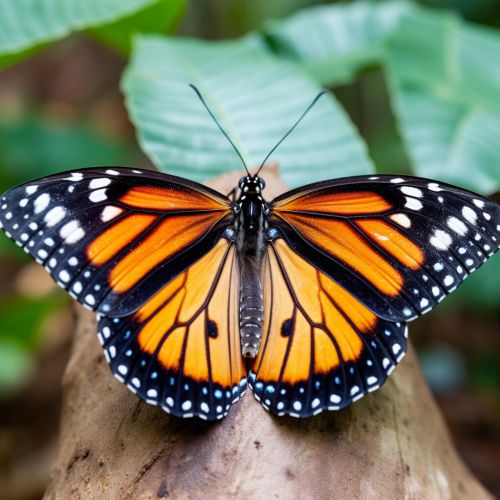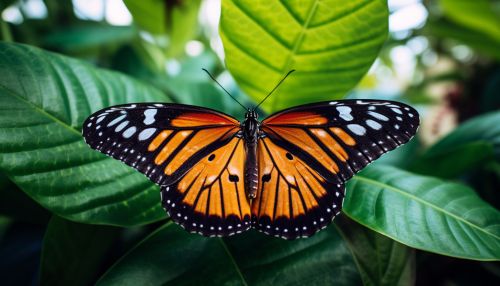Nymphalidae
Taxonomy and Classification
The Nymphalidae, commonly known as the brush-footed butterflies or four-footed butterflies, are a family within the order Lepidoptera. The family is large and diverse, with over 6,000 species spread across 10 subfamilies. The Nymphalidae are primarily distinguished by their reduced forelegs, which are often small and brush-like, hence the common name. This family includes some of the most familiar and iconic species of butterflies, such as the monarch butterfly (Danaus plexippus) and the painted lady (Vanessa cardui).


Morphology and Anatomy
Nymphalidae butterflies are characterized by their unique morphology. The most distinctive feature is their reduced forelegs, which are often small and brush-like, giving rise to the common name "brush-footed butterflies". This is a result of evolutionary adaptation, as these butterflies do not use their forelegs for walking. Instead, they walk on their four hind legs, hence the alternative name "four-footed butterflies".
The wings of Nymphalidae butterflies are typically large and colourful, often with complex patterns. These patterns are not just for show; they play a crucial role in mate selection and predator avoidance. The wings are covered in tiny scales, which give the wings their colour. These scales are pigmented with melanins that give them blacks and browns, but blues, greens, reds and iridescence are usually created not by pigments but the microstructure of the scales. This structural coloration is the result of coherent scattering of light by the photonic crystal nature of the scales.
Life Cycle
The life cycle of the Nymphalidae, like all butterflies, consists of four stages: egg, larva (caterpillar), pupa (chrysalis), and adult butterfly. The female butterfly lays her eggs on a host plant, which the caterpillar will feed on once it hatches. The caterpillar stage is the primary growth phase; the caterpillar will increase its body size many times before pupating. During the pupa stage, the caterpillar undergoes a complete metamorphosis, transforming into an adult butterfly. The adult butterfly emerges from the chrysalis and, after a period of maturation, is ready to reproduce, thus completing the life cycle.
Ecology and Behaviour
Nymphalidae butterflies are found in a wide range of habitats, from tropical rainforests to arctic tundra. They are primarily diurnal, active during the day and resting at night. Many species are migratory, including the well-known monarch butterfly, which undertakes a multi-generational migration covering thousands of kilometers.
The diet of Nymphalidae butterflies varies across the life cycle. Caterpillars are typically herbivorous, feeding on the leaves of their host plants. Adult butterflies, on the other hand, feed primarily on nectar from flowers. However, some species are known to feed on tree sap, rotting fruit, dung, pollen, or even the bodily fluids of dead animals.
Conservation
Many species of Nymphalidae are under threat due to habitat loss, climate change, and other anthropogenic factors. Conservation efforts for these butterflies typically involve habitat preservation or restoration, as well as captive breeding and release programs. Some species, such as the monarch butterfly, are also the focus of citizen science projects, where members of the public contribute to scientific research by monitoring butterfly populations and migrations.
